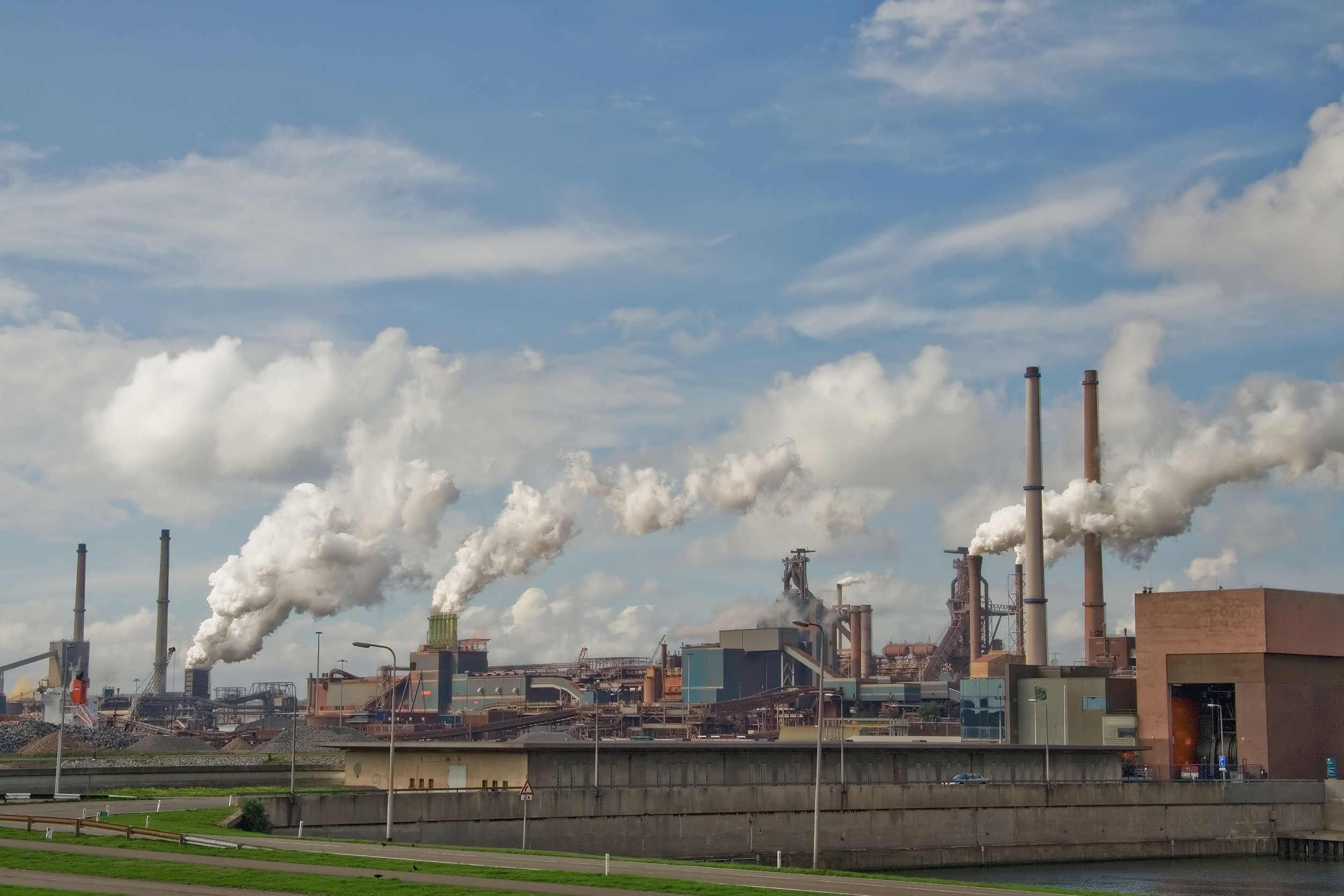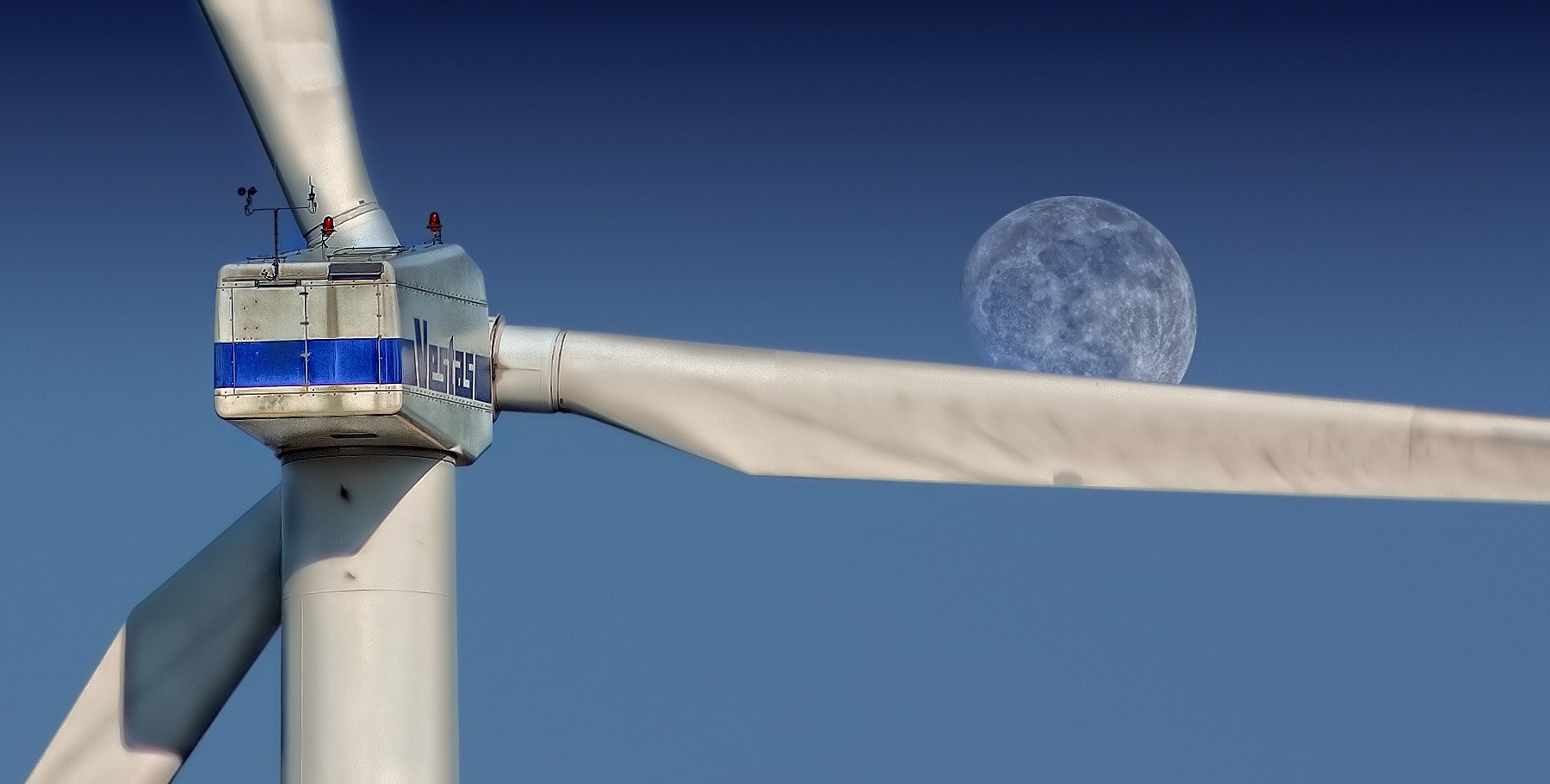By Breanna Hayes, Managing Editor, Vermont Journal of Environmental Law.
This post is part of the Environmental Law Review Syndicate.
I. Introduction
Human use of fossil fuels dates back to prehistoric times.[1] Before the Industrial Revolution, humans mostly relied on wood, wind, and water as energy sources.[2] But as the Industrial Revolution progressed, humans developed a dependence on fossil fuels.[3] In addition, the advancements of the Industrial Revolution allowed for the human population to grow rapidly.[4] Combined, these facts indicate that, not only were humans developing a greater dependence on fossil fuels, but also there were more humans on earth than ever before. With a greater number of humans, fossil fuel dependence was even more severe.
While humans blindly relied on fossil fuels for centuries, by the 1940s scientists began predicting the impact that fossil fuels would have on the environment.[5] In 1949, M. King Hubbart made a prediction known as “Hubbart’s Peak.”[6] According to this prediction, fossil fuels would peak in the 1970s.[7] Hubbart further predicted that despite the peak in fossil fuels, humans would still have a rising demand for energy.[8] According to Hubbart’s predictions, the energy sector would need to replace fossil fuels with renewable energy sources to meet the demand.[9] As predicted, oil peaked in 1971, with other fossil fuels soon to follow.[10] Yet, by the time the world began to acknowledge Hubbart’s peak, fossil fuels had “become so firmly interwoven into human progress and economy, that changing this energy system would drastically alter the very way we have lived our lives.”[11] While the transition will be difficult, many nations around the world have begun to move away from fossil fuels.[12] A major victory in the movement from fossil fuels was the Paris Agreement, which has been ratified by more than 100 countries.[13] In the Paris Agreement, countries committed to, “holding the increase in the global average temperature to well below 2°C above pre-industrial levels and pursuing efforts to limit the temperature increase to 1.5°C above pre-industrial levels, recognizing that this would significantly reduce the risks and impacts of climate change”[14]
While world governments are progressing towards greener energy to combat climate change, a problem arises in the energy industry. Publicly traded energy companies are a considerable market force,[15] despite demand for fossil fuels continuing to decrease and the demand for renewable energy sources rising.[16] In 2015, even though fossil fuel prices were at a multi-year low, “over half of global power capacity additions in 2015 came from wind, solar, hydro and nuclear.”[17] Additionally, the Paris Agreement, formulated in December 2015, creates the expectation that policy-makers will advance progressive ideas to help countries meet the agreed-upon two degree Celsius cap.[18] An obvious way to mitigate this change is for energy companies to start diversifying portfolios to include renewable sources.[19] However, timing is key for both the market and the climate. Concerning the market, “If [companies] move too quickly, money could be left on the table from their fossil fuels business. But too slowly, and they could miss their window of opportunity.” On the other hand, the world has a very restricted carbon budget if it is going to honor the two degree Celsius cap embodied in the Paris Agreement.[20]
This article focuses on the window of time that companies have to shift from fossil fuels to renewable energy. The article provides a quick overview of public companies and the use of stock. Then, the article discusses the “Carbon Bubble” and how it compares and contrasts to both the dotcom and housing market bubbles. Finally, the article discusses the environmental impact of the energy industry’s financial choices.
II. Background: Brief Overview of Public Companies
Public companies differ from private companies in two ways. First, public companies trade stock on the public stock exchange and second, public companies make regular, legally required disclosures to the Securities Exchange Commission (SEC).[21] By selling stock on the public stock exchange, any person can purchase stock in a company. In addition to individual citizens, institutional investors—such as pension funds, insurance companies, and mutual funds—may purchase public stock.[22] The SEC requires publicly traded companies to make regular disclosures to protect both individual and institutional investors.[23] According to SEC, public companies must “disclose meaningful financial and other information” so there can be a “common pool of knowledge for all investors to use to judge for themselves whether to buy, sell, or hold a particular security.”[24]
When a company decides to sell stock to the public, multiple factors determine the price for the stock and the price can fluctuate constantly. Regardless of what a person pays for a share of stock, they are entitled to the same thing—a share of the company’s equity. The company’s equity can be determined by a simplified formula. All companies have assets and liabilities. Assets are the fixed infrastructure and inventory the company can liquidate, and liabilities are the debts a company owes. Because a company’s equity is subordinate to its debts, equity can be determined by subtracting the liabilities from the assets. The equity is then divided by the amount of stock the company issued. For example, if a company owns $50 million worth of assets and has $20 million in liabilities, the company’s equity would be $30 million. If the company issued 2 million shares, each share would be worth $15 of the equity.
As mentioned, a stock’s price is not locked in to its current value of equity. Rather, many factors, such as investor enthusiasm may alter the price. [25] If investors believe that the company will grow, stock may sell higher than it is worth in equity. Yet, a problem arises when stock price increases rapidly but the assets of the company do not catch up. When assets’ prices appreciate beyond their value, a market bubble emerges.[26] For example, “Investors may bid up the price of an asset in the belief that its price will continue to rise and when the ever-higher price results in an ever-smaller number of buyers, the price eventually declines rapidly.”[27] Inevitably, the bubble bursts and the price drops.[28]
Some are concerned that energy companies are creating a bubble.[29] The concern stems from how energy companies value assets. Energy companies consider reserves of fossil fuels as assets.[30] But, in light of current political and social action regarding climate change, many believe that energy companies will not be able to utilize all fossil fuel reserves that are now considered assets of the companies.[31]
III. The Carbon Bubble
Prior to the Paris agreement, nearly 200 countries signed the Cancun Agreement, which embodied an international commitment to keep the global temperature from rising more than two degrees Celsius from pre-industrial levels.[32] The Cancun Agreement additionally acknowledges the possible need to further restrict global warming to 1.5 degrees Celsius.[33] In November 2011, Carbon Tracker Initiative (CTI), a nonprofit think tank, used the Cancun Agreement as a reference point and pioneered the concept of “the Carbon Bubble.”[34] Relying on the assertion that the world would limit carbon usage within the bounds of the Cancun Agreement, CTI calculated that the world’s energy budget was about one-third of what energy companies had in reserves.[35] The other two-thirds would be “stranded assets.” CTI defined stranded assets as:
Fossil fuel energy and generation resources which, at some time prior to the end of their economic life (as assumed at the investment decision point), are no longer able to earn an economic return (i.e. meet the company’s internal rate of return), as a result of changes in the market and regulatory environment associated with the transition to a low-carbon economy.[36]
CTI further calculated, that by 2011, the world had already used a third of its usable energy budget.[37]
CTI also asserted that the carbon bubble could pose financial risks to investors. The report states that:
The current system of market oversight and regulatory supervision is not adequate to send the required signals to shift capital towards a low carbon economy at the speed or scale required. The current short-term approach of the investment industry leaves asset owners exposed to a portfolio of assets whose value is likely to be seriously impaired.[38]
CTI further criticized the energy industry for continuing to use invested money to explore for more fossil fuel reserves, despite the fact that the reserves already located would exceed the carbon budget.
IV. The Other Bubbles: Housing and Dotcom
To understand the possible effects of a carbon bubble, it is useful to look at the two most recent economic bubbles: the dotcom and housing bubbles. The dotcom bubble occurred from 1995-2001 and revolved around the growing tech industry catalyzed by the advent of the internet.[39] The housing bubble began to grow in 2000 and burst in 2006 after banks and other originators approved more and more subprime and nonprime mortgages.[40] The distinguishing factor between the housing bubble and the dotcom bubble is the was the impact on the economy. The housing bubble had a heavy impact on the economy, while the dot com bubble did not.[41]
In the 1990s, the internet became increasingly integrated into everyday life. In response to growing dependence on the internet, many online retail companies began springing up.[42] Investors enthusiastically invested in companies that were taking advantage of the internet frontier.[43] Investor enthusiasm was so high, some companies saw stock prices double within one day of an IPO.[44] The flow of investments fueled the “dotcom bubble.”[45]
The intense investor enthusiasm made stock prices rise[46] however, some companies were losing as much as $10 million to $30 million per quarter.[47] Due to these unsustainable losses, many internet-based companies folded.[48] Between March and April of 2000, roughly a trillion dollars worth of investments were lost.[49]
Just as the dotcom bubble popped, the housing bubble began to grow.[50] In the early 2000s, banks and other originators approved more subprime and nonprime loans.[51] These mortgages were high risk because approved borrowers often had low credit scores or were charged rates and fees higher than they were unqualified for.[52] Some mortgage loans had risks layered, including those where potential repayment issues were deferred by permitting “adjustable” payments.[53] Such structures allowed borrowers to select monthly payments that were lower than the fully amortized rate.[54] This meant that borrowers could make no principal payments and just send in a fraction of the interest accruing each month, for the first few years. With this type of adjustable rate mortgage, the principal balance would grow.[55] The rates would reset in a few years to the fully amortized rates, and then monthly payments would spike to a level that many borrowers could not afford. After banks and other originators approved subprime mortgages, banks would pool these mortgages and use them to back securities that they would then sell to investors, including other banks.[56] Certain slices of these mortgage-backed securities were sometimes repackaged into new pools that also issued securities.[57] This scheme worked to help supply needed credit to the housing market while borrowers could afford their payments. However, when payments spiked and many borrowers defaulted, the mortgage-backed securities began to decline in value. Some banking firms that held mortgage-linked securities in their portfolios began to collapse.[58]
The burst of both the dotcom and housing bubbles caused a loss of roughly $6 trillion in household wealth.[59] While both bubbles caused similar losses, the housing bubble burst had a much greater effect on the rest of the economy than the dotcom bubble did.[60] The housing bubble had a stronger effect on the economy because of the population impacted.[61] When the dotcom bubble burst, the majority of investors were wealthy and less indebted.[62] Even though those investors lost money, they still had disposable income. In contrast, the people who felt the shock of the housing bubble were mostly low-income homeowners.[63] The bubble was fueled by subprime and nonprime loans that many people could not afford to repay. As a result, most of these people’s income went into trying to pay their mortgages and save their homes.[64] Unlike the wealthy, albeit unlucky, investors who lost wealth in the dotcom bubble, the homeowners impacted by the housing bubble could not afford to continue retail spending.[65] Consequently, the economy felt a much greater shock from the housing bubble burst than the previous dotcom bubble burst.
V. The Carbon Bubble Mirrors the Dotcom Bubble on a Financial Scale
It is unlikely that the carbon bubble will have the same detrimental effect on the economy that the housing bubble had. This is because the carbon bubble differs from the housing bubble in two significant ways. First, the carbon bubble is not fueled by debt, subprime or otherwise. Second, the carbon bubble is more similar to the dotcom bubble because the people who will most likely feel the shock are wealthy investors who will be able to absorb the loss without halting retail spending.
In the housing crisis, the assets that were overvalued were the mortgage-backed securities. Borrowers could not repay high-risk loans, so there was no capital to fund the mortgage-back securities. On the other hand, there are still high consumption rates of fossil fuels.[66] Whereas the housing bubble was built on unsustainable loans, the carbon bubble is forming around anticipated legislation. The carbon bubble is not forming from industry’s inability to provide reserves, rather anticipatory need for regulation.
Another factor that fueled the housing bubble was government intervention. The government promoted home ownership, leading more people to borrow money.[67] In contrast, governments are not promoting fossil fuel usage. The recent election of Donald Trump to the Presidency may impact how “stranded” the energy company assets really are. During the Obama Administration, the United States made strides toward greener energy, which included signing the Paris Agreement.[68] The President-Elect Donald Trump has pledged to withdraw from the Paris Agreement and has supported the use of fossil fuels.[69] Therefore, the United States may not provide restrictive legislation that would burst the carbon bubble. Nevertheless, while a pro-fossil fuel administration in the United States may delay the shock, it will still come. The United States is only one of the countries that ratified the Paris Agreement. While fossil fuels may have a market in the United States under a Trump Administration, the global market will still decrease.
The carbon bubble will most likely affect the economy similarly to the dotcom bubble. If the shares plummet, those affected will be mostly wealthy or institutional investors. For example, according to the Forbes Global 2000 list of the World’s Biggest Public Companies, ExxonMobil ranked as number 9 and Chevron ranked number 28.[70] The companies also ranked first and third respectively for public companies in oil and gas operations.[71] Of the 4.15 billion outstanding ExxonMobil shares, company insiders own over 500 million and institutions own over 2 billion.[72] Similarly, of the 1.89 billion outstanding Chevron stock, corporate insiders own approximately 75 million and institutional investors own more than 1.18 billion shares.[73] While personal wealth would be lost if energy stock plummeted, it would not have the same detrimental effect on retail spending as the housing bubble did.
Furthermore, stockholders are holding the companies accountable for their practices. Recently, ExxonMobil shareholders agreed to the “prudent use of investor capital in light of the climate change related risks of stranded carbon assets.”[74] Also, some shareholders are bringing a securities class action alleging that ExxonMobil materially misrepresented its assets[75] (although currently, the class is not yet certified[76]). Shareholders can use these avenues to assist legislators in holding these companies to the carbon budget.
VI. The Environment Will Still Suffer
While the carbon bubble is unlikely to wreak havoc on the economy, the threat to the environment is still very real. In fact, the lack of effect on the economy may increase the threat to the environment. If the world is committed to keeping global temperatures below two degrees Celsius, as of 2013, 60-80 percent of fossil fuel reserves must stay under the ground.[77] The use of fossil fuels and the transition to renewables may not lead the world to a financial crisis, but if the transition is not quick, the world may face an environmental crisis. If energy companies are too slow in transitioning from fossil fuel to renewable sources, they will overspend on the carbon budget. If that happens, the likelihood of global temperatures exceeding the agreed on cap of two degrees Celsius increases. [78] There are many effects that rising temperatures could have on the environment, including shrinking glaciers, loss of sea ice, accelerated sea level rise, longer and more intense heat waves, shifts in plant and animal ranges, trees flowering sooner, etc.[79] Many of these effects are already documented.[80]
If these changes continue, communities will feel the impact. The effects could be health-based, social, or cultural due to a change in the availability of natural resources.[81] According to the Environmental Protection Agency,
Climate change may especially impact people who live in areas that are vulnerable to coastal storms, drought, and sea level rise or people who live in poverty, older adults, and immigrant communities. Similarly, some types of professions and industries may face considerable challenges from climate change. Professions that are closely linked to weather and climate, such as outdoor tourism, commerce, and agriculture, will likely be especially affected.[82]
While energy companies are inflating the carbon bubble by burning carbon and contributing to these environmental effects, it is unlikely that courts will hold companies liable.[83] This is because, without a federal cause of action, it is challenging to prove causation.[84] Since climate change is a global problem, it is challenging to prove that individual companies caused certain environmental issues.
VII. Conclusion
There is reason to be concerned about the carbon bubble, but that reason is not the stock market. Most likely, the carbon bubble will not have the effect on the economy that the housing market did. This is because, on the financial side, either the companies will divest from fossil fuels or the people who will be affected by the carbon bubble burst will be wealthy enough to absorb the shock.
On the other hand, if companies continue to burn carbon and inflate the carbon bubble, people will feel the environmental effects on a societal level. Natural resources may become scarcer, cultural ways of life may fade due to lack of resources and communities may be destroyed due to harsh storms. The impact on communities will not come from a stock market crash; it will come from environmental catastrophes.
[1] A Brief History of Coal Use, U.S. Dep’t of Energy, http://www.fe.doe.gov/education/energylessons/coal/coal_history.html (last visited Nov. 16, 2016).
[2] Eric McLamb, The Ecological Impact of the Industrial Revolution, Ecology Glob. Network, (Sept. 18, 2011) http://www.ecology.com/2011/09/18/ecological-impact-industrial-revolution/.
[3] Id.
[4] Id.
[5] Id.
[6] Id.
[7] Id.
[8] Id.
[9] Id.
[10] Id.
[11] Id.
[12] Lorraine Chow, 150 Days and Counting, Costa Rica Gets All its Electricity From Renewables, EcoWatch, (Sept. 7, 2016) http://www.ecowatch.com/costa-rica-renewable-energy-1998953868.html; Justin Gillis, A Tricky Transition from Fossil Fuel: Denmark Aims for 100 Percent Renewable Energy, NYTimes, (Nov. 10, 2014) http://www.nytimes.com/2014/11/11/science/earth/denmark-aims-for-100-percent-renewable-energy.html (discussing Denmark’s commitment to wind energy); Justin Gillis, Sun and Wind Alter Global Landscape, Leaving Utilities Behind, NYTimes, (Sept. 13, 2014) http://www.nytimes.com/2014/09/14/ science/earth/sun-and-wind-alter-german-landscape-leaving-utilities-behind.html (discussing Germany’s commitment to renewable energy, the largest industrial power to do so.)
[13] Paris Agreement- Status of Ratification, UNFCCC, http://unfccc.int/paris_agreement/items/9444.php (last visited Nov. 21, 2016).
[14] The Paris Agreement, art. 2(1)(a), Nov. 4, 2016.
[15] See The World’s Biggest Public Companies, Forbes, http://www.forbes.com/global2000/list/#tab:overall (last visited Nov. 21, 2016) (listing ExxonMobil, PetroChina, Chevron, Total, Sinopec, and Royal Dutch Shell in the top 50 public companies).
[16] Tara Schmidt, 2016: Time for Energy To Reinvent Itself?, Forbes, (Dec. 15, 2015) http://www.forbes.com/sites/woodmackenzie/2015/12/15/2016-time-for-energy-to-reinvent-itself/#1a2eaaef7386.
[17] Id.
[18] Id.
[19] Id.
[20] Carbon Bubble, Carbon Tracker Initiative, http://www.carbontracker.org/report/carbon-bubble/ (last visited Nov. 11, 2016).
[21] Public Companies, SEC https://www.investor.gov/introduction-investing/basics/how-market-works/public-companies (last visited Nov. 21, 2016).
[22] What We Do, SEC http://www.sec.gov/about/whatwedo.shtml (last visited Nov. 21, 2016).
[23] Id.
[24] Id.
[25] Id.
[26] Jonathon D. Glater, Student Debt and the Siren Song of Systemic Risk, 53 Harvard J. on Legislation 99, 121 (2016).
[27] Id.
[28] Id.
[29] Duncan Clark, Why Can’t We Give Up Fossil Fuels, The Guardian, (Apr. 17, 2013 12:49PM) https://www.theguardian.com/environment/2013/apr/17/why-cant-we-give-up-fossil-fuels.
[30] Id.
[31] Id.
[32] Juliet Eilperin & William Booth, Cancun Agreements put 193 nations on track to deal with climate change, The Washington Post(Dec. 11, 20100 http://www.washingtonpost.com/wp-dyn/content/article/2010/12/11/AR2010121102308.html.
[33] The Cancun Agreement, art. 139(a)(iv).
[34] Carbon Bubble, Carbon Tracker Initiative, http://www.carbontracker.org/report/carbon-bubble/ (last visited Nov. 11, 2016).
[35] Id.
[36] Key Terms, Carbon Tracker Initiative, http://www.carbontracker.org/resources/ (last visited Nov. 21, 2016).
[37] Carbon Bubble, supra, note 34.
[38] Unburnable Carbon, Carbon Tracker Initiative, 18 (2011).
[39] Ben Geier, What Did We Learn From the Dotcom Stock Bubble of 2000?, Time, (Mar. 12, 2015). http://time.com/3741681/2000-dotcom-stock-bust/.
[40] Jennifer Taub, Other’s People Houses, 140-145181-183
[41] Steven Gjerstad & Vernon L. Smith, From Bubble to Depression?, The Wall Street Journal, (Apr. 9, 2009) http://www.wsj.com/articles/SB123897612802791281; Amir Sufi & Atif Mian, Why the Housing Bubble Tanked the Economy and the Tech Bubble Didn’t, FiveThirtyEight, (May 12, 2014) http://fivethirtyeight.com/features/why-the-housing-bubble-tanked-the-economy-and-the-tech-bubble-didnt/.
[42] Geier, supra note 38.
[43] Id.
[44] Id.
[45] Id.
[46] Id.
[47] Id.
[48] Id
[49] Id.
[50] Taub, supra note 39, at 166.
[51] Id.
[52] Id.
[53] Id.
[54] Consumer Handbook on Adjustable Rate Mortgages, The Federal Reserve Board, 4, http://files.consumerfinance.gov/f/201204_CFPB_ARMs-brochure.pdf
[55] Id.
[56] Taub, supra note 39, at 156.
[57] Id. at 157.
[58] Id. at 185.
[59] Amir Sufi & Atif Mian, supra note 40.
[60] Id.
[61] Id.
[62] Id.
[63] Id.
[64] Id.
[65] Id.
[66]Fossil Fuels Still Dominate U.S. Energy Consumption Despite Recent Market Share Decline, U.S. Energy Information Administration, https://www.eia.gov/todayinenergy/detail.php?id=26912 (last visited Dec. 10, 2016).
[67] Glater, supra note 26, at 125.
[68] The United States Formally Enters the Paris Agreement, The White House, (Sept. 3, 2016) https://www.whitehouse.gov/blog/2016/09/03/president-obama-united-states-formally-enters-paris-agreement
[69] Here’s How Soon Donald Trump Could Pull Out of a Historic Climate Change Deal, Fortune, (Nov. 10, 2016) http://fortune.com/2016/11/10/donald-trump-climate-change-paris-agreement/; Ashley Parker & Coral Davenport, Donald Trump’s Energy Plan, More Fossil Fuels and Less Rules, NYTimes, (May 26, 2016) http://www.nytimes.com/2016/05/27/us/politics/donald-trump-global-warming-energy-policy.html.
[70] The World’s Biggest Public Companies, Forbes, http://www.forbes.com/global2000/#/industry:Oil%20&%20Gas%20Operations (last visited Nov. 27, 2016).
[71] PetroChina ranked second, however information on stock distribution was unavailable. Id.
[72] ExxonMobil Corporation, Yahoo Finance, https://finance.yahoo.com/quote/XOM/financials?p=XOM (last visited Nov. 27, 2016).
[73] Chevron Corporation, Yahoo Finance, https://finance.yahoo.com/quote/CVX/financials?p=CVX (last visited Nov. 27, 2016).
[74] XOM Return Capital to Shareholders to Avoid Stranded Assets in 2016, Ceres, https://www.ceres.org/investor-network/resolutions/xom-return-capital-to-shareholders-to-avoid-stranded-assets-2016 (last visited Nov. 27, 2016).
[75] ExxonMobil Corporation, Rosen L. Firm, http://www.rosenlegal.com/cases-988.html (last visited Nov. 27, 2016).
[76] Id.
[77] Unburnable Carbon 2013: Wasted Capital and Stranded Assets, Carbon Tracker Initiative, (Apr. 2013) http://www.carbontracker.org/report/unburnable-carbon-wasted-capital-and-stranded-assets/.
[78] Id.
[79] The Consequences of Climate Change, NASA, http://climate.nasa.gov/effects/ (last visited Nov. 27, 2016).
[80] Id.
[81] Climate Impacts on Society, Envtl. Prot. Agency, https://www.epa.gov/climate-impacts/climate-impacts-society#equity (last visited Nov. 27, 2016).
[82] Id.
[83] AEP v. Connecticut, 564 U.S. 410 (2011)
[84] Id.




